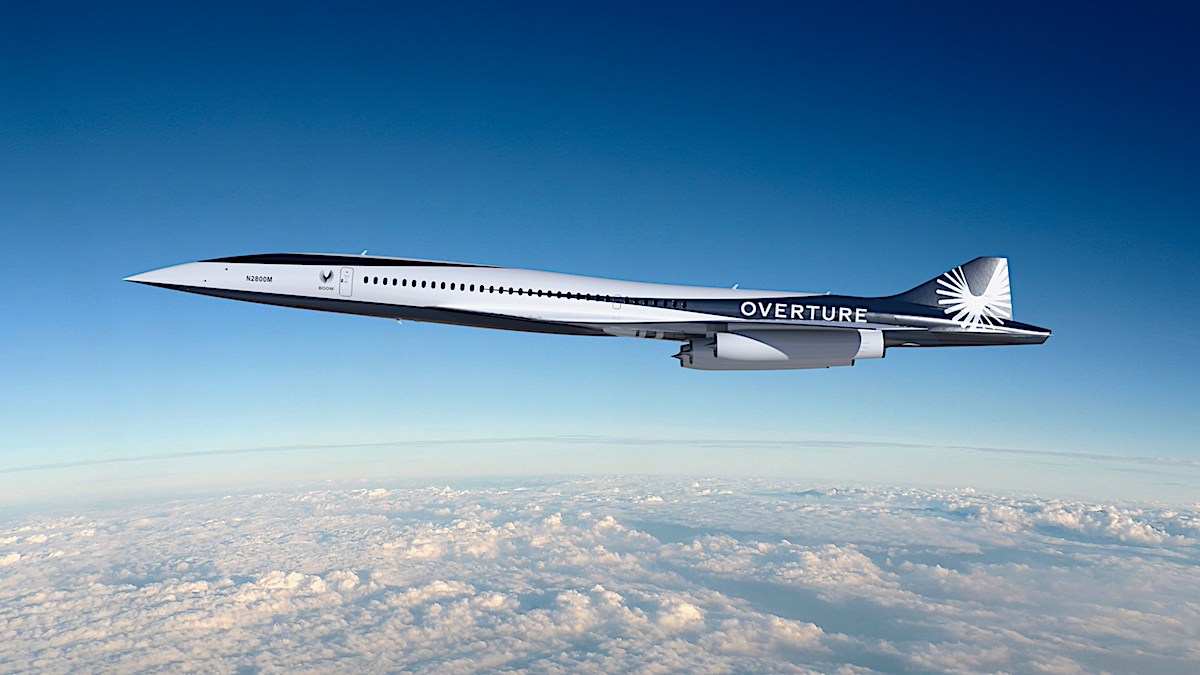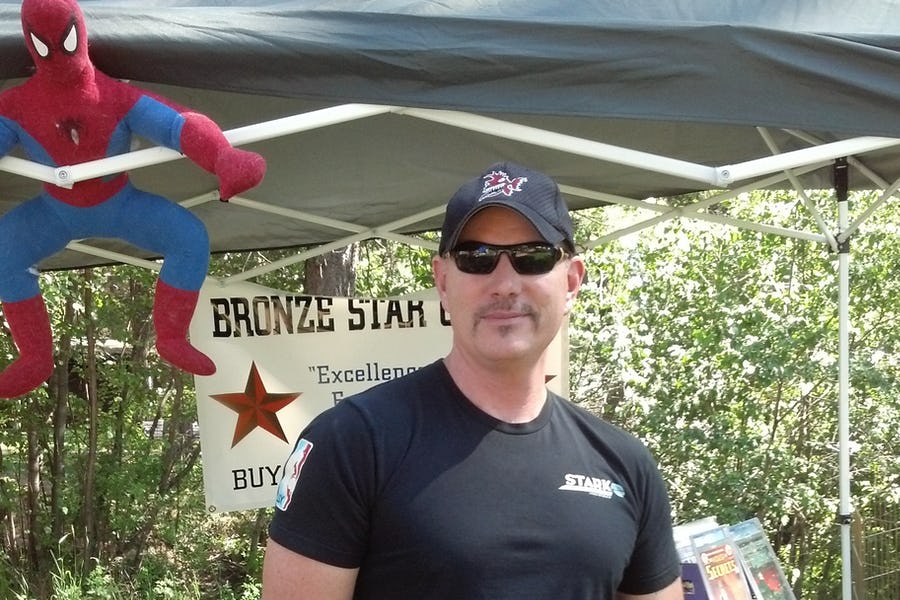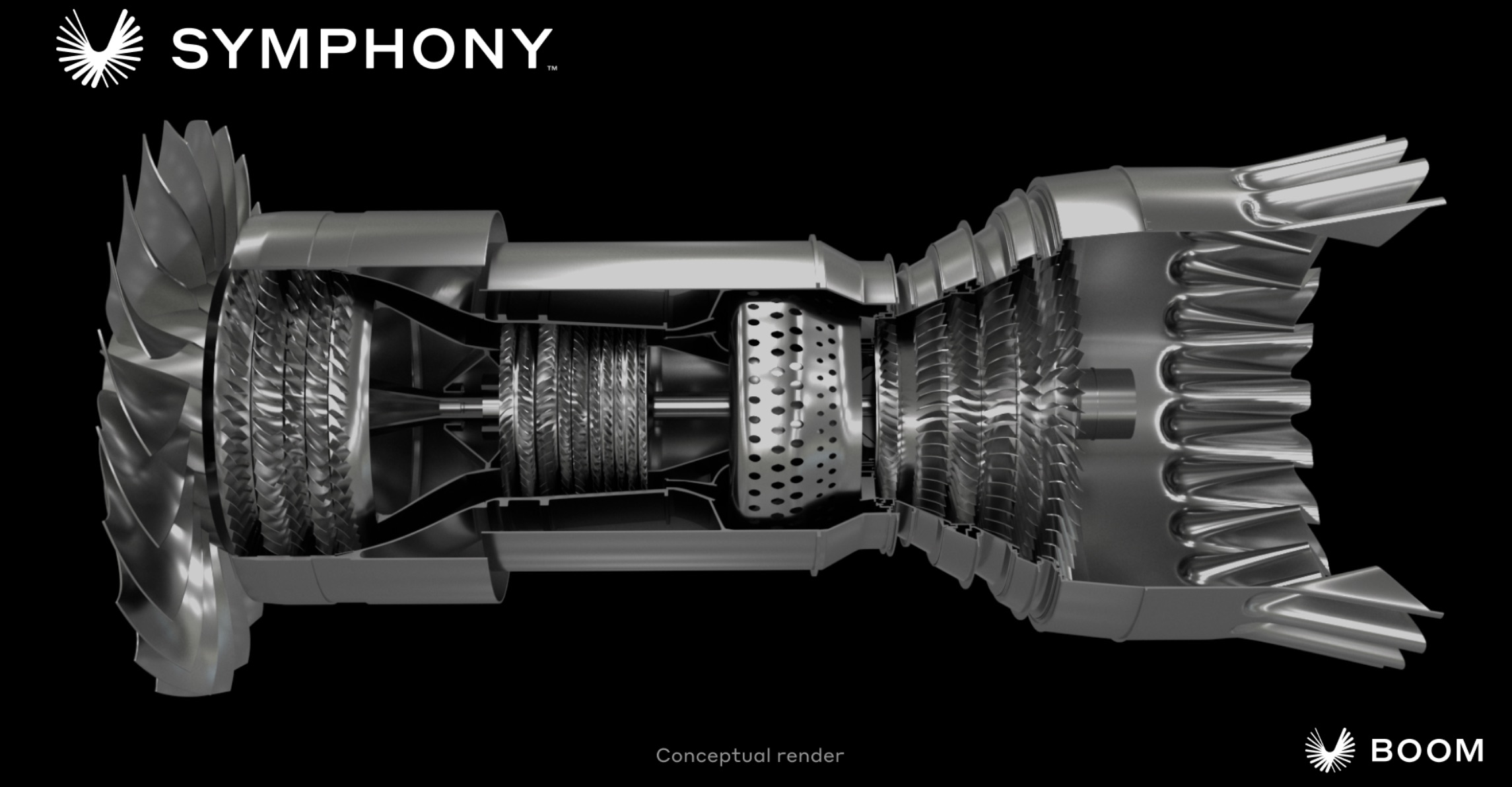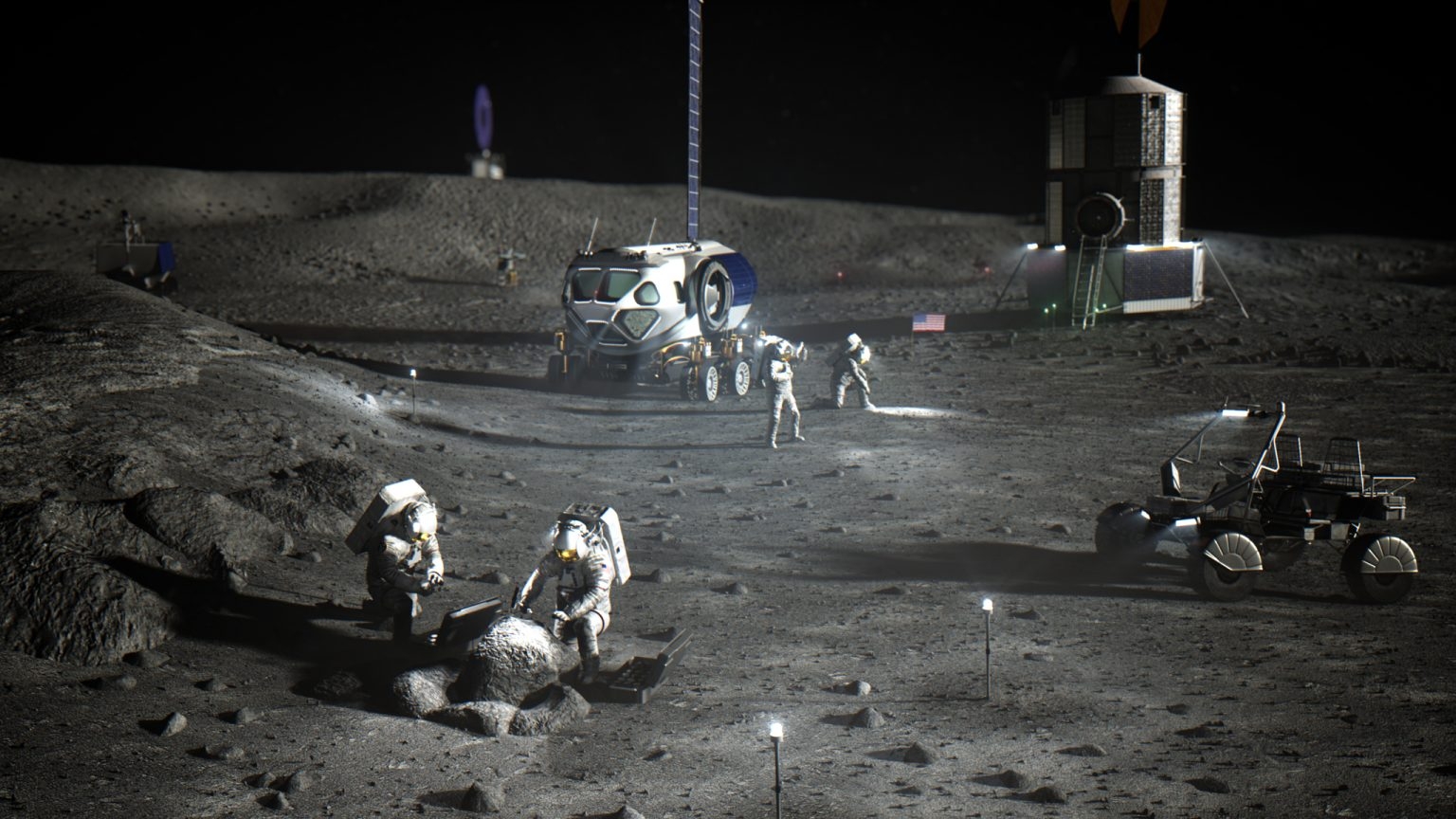Boom Supersonic unveils new Symphony engine for faster-than-sound Overture airliner

Boom Supersonic is determined to create the planet's fastest airliner with its needle-nosed Overture supersonic plane, and now the sleek craft will be equipped with a brand new turbo-fan propulsion system.
This month, the Denver-based Boom Supersonic announced plans to power uts faster-than-sound Overture passenger plane with its Symphony engine. The new engine is being developed under partnership with a trio of industry vanguards: Florida Turbine Technologies (FTT) for engine design, GE Additive for additive technology design consulting and StandardAero, one of the aerospace industry's biggest independent maintenance, repair and overhaul providers.
"Developing a supersonic engine specifically for Overture offers by far the best value proposition for our customers," said Blake Scholl, Founder and CEO of Boom Supersonic in a Dec. 13 statement. "Through the Symphony program, we can provide our customers with an economically and environmentally sustainable supersonic airplane — a combination unattainable with the current constraints of derivative engines and industry norms."
Overture's customized propulsion system is intended to run at net zero carbon and flying relatively quietly for a supersonic jet, passing the test for Chapter 14 noise levels with flying colors. Symphony hopes to offer a significant 25% increase in time on wing and drastically lower engine maintenance and repair costs, thereby slashing airplane operating bills for customers by a minimum of 10%. Boom Supersonic plans to provide Overture jets to United for passenger flights and has teamed up with Northrop Grumman on a military jet for the U.S. Defense Department.
"United and Boom share a passion for making the world dramatically more accessible through sustainable supersonic travel," Mike Leskinen, President of United Airlines Ventures, said in the statement. "The team at Boom understands what we need to create a compelling experience for our passengers, and we are looking forward to a United supersonic fleet powered by Symphony."
FTT is well equipped to confidently head up this new supersonic engine design. Many of its veteran engineers were instrumental in creating the powerful F-119 and F-135 supersonic engines that are installed on the F-22 Raptor and F-35 Panther.
"The team at FTT has a decades-long history of developing innovative, high-performance propulsion solutions," said Stacey Rock, President of Florida Turbine Technologies, in the same announcement. "We are proud to team with Boom and its Symphony partners and look forward to developing the first bespoke engine for sustainable, economical supersonic flight."
Breaking space news, the latest updates on rocket launches, skywatching events and more!
According to Boom Supersonic's Dec. 13 statement, Symphony will be designated as a medium-bypass turbofan engine conceived with the same basic engine architecture found in nearly all of today's regular commercial aircraft. However, in a deviation from traditional subsonic turbofans, this next-generation propulsion system adds a proprietary Boom-designed axisymmetric supersonic intake, matched with a variable-geometry low-noise exhaust nozzle and a passively cooled high-pressure turbine.
Some specific design features on the drawing board for Symphony include a twin-spool, medium-bypass turbofan engine with no afterburner, generating a massive 35,000 pounds of thrust at takeoff and burning 100% sustainable aviation fuel. Its single-stage fan highlights whisper-quiet operation and will be fully compliant with all FAA and EASA Part 33 requirements.
Symphony's complex blueprints and design refinements are moving forward according to plan, with Overture rocketing towards official type certification in 2029. Production will kick off in 2024 at Overture's Greensboro, North Carolina superfactory with a slated 2026 rollout and 2027 first flight test.
Follow us on Twitter @Spacedotcom or Facebook.

Jeff Spry is an award-winning screenwriter and veteran freelance journalist covering TV, movies, video games, books, and comics. His work has appeared at SYFY Wire, Inverse, Collider, Bleeding Cool and elsewhere. Jeff lives in beautiful Bend, Oregon amid the ponderosa pines, classic muscle cars, a crypt of collector horror comics, and two loyal English Setters.

